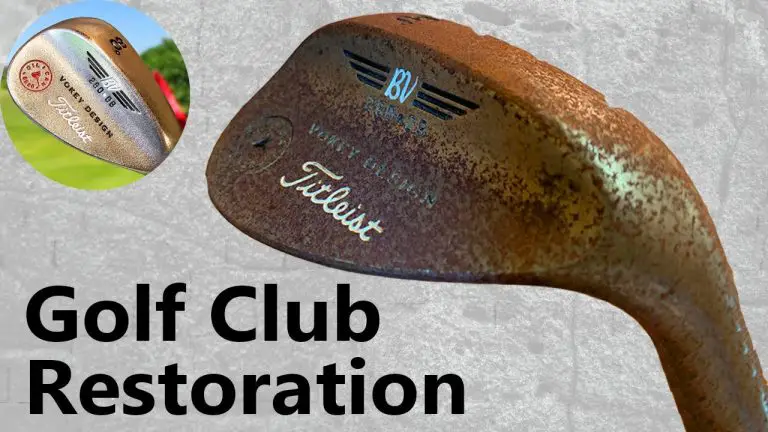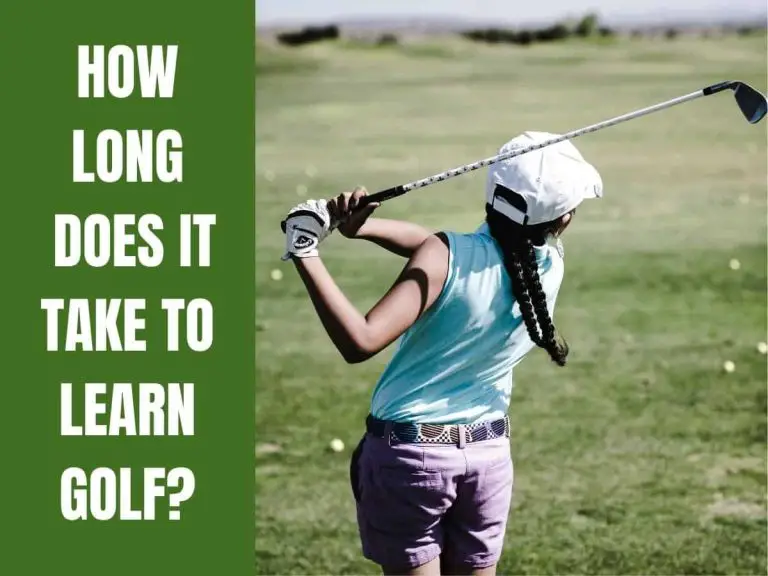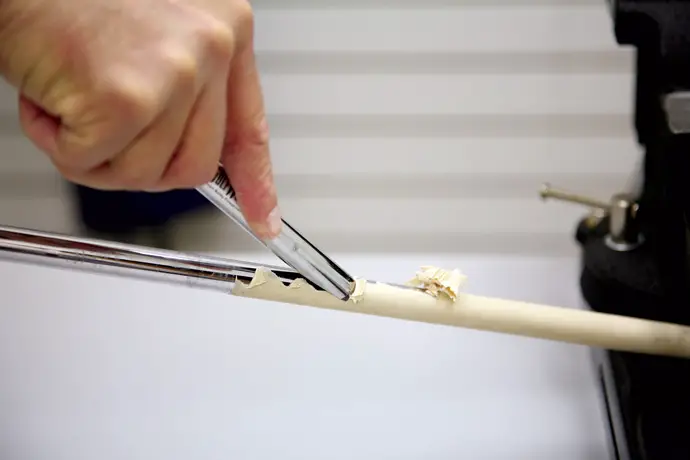How To Hit A Fade With A Strong Grip

In the game of golf, the ability to shape your shots opens up a world of possibilities on the course. One popular shot shape that many golfers aspire to master is the fade—a controlled shot that gently curves from left to right (for right-handed golfers). Hitting a fade can add versatility to your game, allowing you to navigate around obstacles, control the ball flight, and attack challenging pin positions. And when it comes to executing a fade, having a strong grip is crucial.
In this comprehensive guide, we will explore how to hit a fade with a strong grip, providing you with the knowledge and techniques necessary to achieve the desired shot shape. We will delve into the fundamentals of the fade shot, the role of grip in shot shaping, and the step-by-step process to establish a strong grip. From there, we will dive into the swing mechanics and adjustments needed to execute a fade with consistency and accuracy.
Whether you’re a beginner seeking to learn the basics or an experienced golfer looking to refine your fade, this guide will equip you with the tools to elevate your game. Get ready to unlock a new level of control and shot-making ability as we explore how to hit a fade with a strong grip. Let’s dive in and master this impressive shot shape together.

Understanding the Fade Shot and the Role of Grip
What is a Fade Shot?
A fade shot is a type of golf shot that curves gently from left to right (for right-handed golfers). Unlike a slice, which is an unintentional and extreme shot shape, a fade is a deliberate and controlled maneuver. The fade shot allows golfers to navigate around obstacles, hold specific lines, and add variety to their game.
The Importance of Grip in Shot Shaping
The grip is a fundamental element of the golf swing, and it plays a crucial role in shaping shots. In the context of hitting a fade, the grip becomes even more significant. A strong grip can promote the desired left-to-right spin on the ball, enabling you to execute a controlled fade shot with consistency.
Establishing a Strong Grip for a Fade Shot
Proper Hand Placement and Pressure
To hit a fade with a strong grip, it’s essential to establish the correct hand placement and grip pressure. Start by placing the club handle diagonally across the fingers of your lead hand (left hand for right-handed golfers). This positioning helps promote a stronger grip.
Next, position your trail hand (right hand for right-handed golfers) with a slightly rotated grip, placing the pad of your hand on top of the grip. This adjustment strengthens your grip and assists in controlling the clubface throughout the swing.
Maintaining proper grip pressure is equally important. A grip that is too tight can restrict the natural movement of the club and impede shot execution. Conversely, a grip that is too loose can lead to inconsistency and loss of control. Find a comfortable grip pressure that allows for a secure hold on the club while maintaining flexibility in your wrists and hands.
Evaluating Clubface Alignment and Ball Position
In addition to a strong grip, clubface alignment and ball position play significant roles in hitting a fade shot. Proper alignment ensures that the clubface is positioned correctly at address, setting the stage for a fade.
When setting up to hit a fade, align the clubface slightly open to the target line. This means that the clubface is pointing slightly to the right of the target (for right-handed golfers). This alignment encourages the left-to-right spin necessary for a fade shot.
Ball position is another crucial factor in executing a fade. Place the ball slightly forward in your stance, closer to your lead foot. This positioning allows you to make contact with the ball slightly before reaching the bottom of your swing arc, promoting a shallow and controlled fade trajectory.
Understanding Body Alignment and Swing Path
The alignment of your body and the swing path are integral components of executing a fade shot with a strong grip. Proper body alignment ensures that your swing path aligns with the desired shot shape.
When hitting a fade, align your body slightly left of the target (for right-handed golfers). This alignment encourages an out-to-in swing path, which is conducive to producing a fade. Aligning your body left creates a deliberate path that allows you to swing across the target line, imparting the desired left-to-right spin on the ball.
Swing Mechanics for Executing a Fade
Backswing Techniques for a Fade Shot
The backswing sets the foundation for the execution of a fade shot. During the backswing, focus on maintaining a smooth and controlled rhythm. Avoid any excessive movement or aggressive swings that may compromise the desired shot shape.
As you take the club back, ensure that your wrists hinge naturally, allowing the club to reach a parallel position to the ground. Keep your arms and shoulders connected, maintaining a compact and synchronized motion.
Transition and Downswing
The transition from the backswing to the downswing is a critical moment in executing a fade shot. This transition should be smooth and deliberate, setting the stage for the controlled release of the club.
As you transition, shift your weight onto your lead foot and initiate the downswing with a slight lateral hip movement. This lateral shift helps create the proper swing path and promotes an out-to-in club movement, ideal for generating the desired fade spin.
As you begin the downswing, focus on maintaining a gradual acceleration through impact. Avoid any abrupt changes in speed or tempo that may compromise the consistency of your shot.
Impact and Follow-Through
The impact position is where the magic happens for a fade shot. Here, you want to ensure that your clubface is slightly open relative to the target line, aligning with the strong grip you established earlier.
Make contact with the ball just before the low point of your swing arc, allowing for a shallow and controlled strike. Maintain a firm and stable base, keeping your lower body engaged while allowing your upper body to rotate naturally through impact.
As you follow through, let your hands and arms release naturally, extending toward your target. Maintain a balanced finish position, with your weight balanced on your lead side and your chest facing slightly left of the target (for right-handed golfers). This follow-through helps enhance the fade spin and ensures a complete and controlled shot execution.
Troubleshooting Common Fade Shot Mistakes
Overcoming Slice Tendencies
When attempting to hit a fade, golfers with a strong grip may occasionally struggle with slicing the ball—a shot that excessively curves from left to right (for right-handed golfers). To overcome this tendency and maintain the desired controlled fade, consider the following adjustments:
- Check Grip Pressure: Ensure that your grip pressure is balanced and not excessively tight. A grip that is too tight can restrict your release and promote a slice.
- Focus on Swing Path: Pay attention to your swing path during the downswing. If you’re experiencing a slice, it could indicate an over-the-top motion or an out-to-in swing path. Focus on swinging along a more neutral or slightly inside-out path to encourage a controlled fade.
- Maintain Clubface Control: Check that your clubface remains slightly open relative to the target throughout the swing. If the clubface is closing too much at impact, it can lead to a slice. Practice monitoring and adjusting your clubface alignment to achieve the desired fade spin.
Balancing Fade Spin with Shot Accuracy
Finding the right balance between fade spin and shot accuracy is crucial for consistently executing successful fade shots. While the fade provides shot-shaping capabilities, it’s essential to ensure that the shot remains accurate and reliable. Consider the following tips:
- Practice Shot Control: Dedicate practice time to fine-tuning your ability to control the amount of fade spin. Experiment with grip pressure, clubface alignment, and swing path variations to find the right combination that allows you to shape shots while maintaining accuracy.
- Evaluate Shot Goals: Assess the situation and desired shot outcome. Sometimes, a smaller fade or a straighter shot may be more appropriate for navigating certain holes or hazards. Adapt your shot selection and shape according to the circumstances to optimize both distance and accuracy.
Practicing and Refining the Fade Shot with a Strong Grip
Dedicated Practice for Developing a Consistent Fade
To develop a reliable fade shot with a strong grip, dedicated practice sessions are essential. Incorporate the following strategies into your practice routine:
- Alignment and Setup Drills: Focus on aligning your body, clubface, and ball position to promote a fade shot. Utilize alignment aids, alignment sticks, or intermediate targets to enhance your setup consistency.
- Shot Shaping Exercises: Practice hitting intentional fade shots on the driving range. Start with shorter clubs and gradually progress to longer clubs as you gain confidence and control. Experiment with different grip pressures and clubface alignments to understand their effects on shot shape.
- Course Simulation: Create simulated on-course scenarios during your practice sessions. Imagine specific holes or situations where a fade shot would be advantageous. Visualize the target and the desired shot shape as you execute your swings.
- Video Analysis: Record your swing and review it to identify any areas for improvement. Pay attention to grip position, clubface alignment, and swing path to ensure they align with your desired fade shot.
By practicing intentionally and dedicating time to honing your fade shot, you’ll develop the necessary skills and confidence to execute it consistently on the golf course.
Applying the Fade Shot on the Course
Once you’ve refined your fade shot with a strong grip, it’s time to incorporate it strategically during your rounds. Consider the following tips for effective on-course application:
- Course Management: Assess the layout of the course and identify opportunities where a fade shot can be advantageous. Utilize the fade to navigate doglegs, avoid hazards, or position your shots favorably for the next shot.
- Shot Selection: Evaluate the wind direction, hole layout, and pin position to determine whether a fade shot is the optimal choice. Consider the required shot shape to take advantage of the prevailing conditions and enhance your scoring opportunities.
- Confidence and Trust: Believe in your ability to execute the fade shot with a strong grip. Trust your practice and preparation. Maintain focus and commit to the shot, even under pressure. Confidence and trust are vital components of successful shot execution.
Conclusion
Mastering the fade shot with a strong grip is a valuable asset in a golfer’s skill set. By understanding the principles of a fade shot, establishing a proper grip, and refining your swing mechanics, you can consistently execute accurate and controlled fades. Through dedicated practice and strategic on-course application, you’ll gain the confidence to shape shots according to course demands and elevate your overall performance.
Remember, practice is key to developing a reliable fade shot. Embrace the challenge of hitting a fade with a strong grip, and enjoy the rewards of increased control, shot variety, and scoring opportunities on the golf course.






